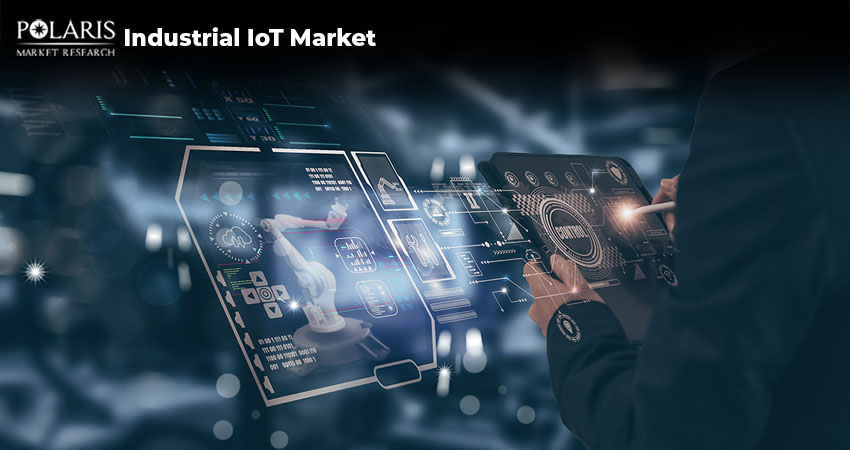Why Industrial IoT (IIoT) is Backbone of Connected Industrial Future?

Imagine walking into a factory where machines talk to each other, anticipate maintenance before breaking down, and adjust operations in real time without human intervention. Sounds like science fiction? It’s not, it’s the reality made possible by industrial internet of things (IIoT). In a world that thrives on efficiency and innovation, IIoT is reshaping how industries operate, combining traditional manufacturing processes with advanced sensors, software, and analytics.
But how exactly does IIoT work? What are its key benefits, and what are its ongoing applications? Buckle up, as we dive deep into the world of smart factories, connected supply chains, and data-driven manufacturing.
What is IIoT?
IIoT is the application of Internet of Things (IoT) technology within industrial settings. It involves connecting sensors, devices, and machinery to the internet to collect, analyze, and utilize data for enhanced efficiency, safety, and cost savings. Along with improving efficiency, this connectivity enhances safety, reduces downtime, and enables predictive maintenance. Unlike consumer IoT, such as smart home devices, IIoT focuses on heavy-duty applications, manufacturing plants, energy grids, logistics, and more.
What Are Key Market Stats?
The industrial IoT (IIoT) market was valued at USD 386.11 billion in 2024. With a CAGR of 23.5%, the market is expected to grow from USD 475.18 billion in 2025 to USD 3,179.26 billion by 2034.
Key Components of IIoT
- Smart Sensors & Edge Devices: In IIoT, smart sensors are devices that collect data as well as process it locally, often using embedded processors or microcontrollers, before sending it to a network. Edge devices, on the other hand, are computing hardware located at the network's edge, close to the sensors and data sources, that perform some initial processing and data filtering.
- Cloud Computing and Big Data Analytics: Cloud computing provides the infrastructure for storing, processing, and analyzing the massive amounts of data generated by connected devices in IIoT, while big data analytics leverages that data to extract valuable insights and drive business decisions.
- Artificial Intelligence (AI) and Machine Learning (ML): In IIoT, AI and ML are used to analyze vast amounts of data generated by connected devices, enabling smarter operations and better decision-making.
- 5G & Low-Latency Networks: 5G & low-latency networks are crucial in IIoT for enabling real-time data processing, seamless machine-to-machine (M2M) communication, and control in applications like smart factories, autonomous vehicles, and remote surgery.
- Cybersecurity Frameworks: A cybersecurity framework in IIoT is a structured approach to managing and mitigating cybersecurity risks within industrial environments that leverage IoT devices and technologies. These frameworks provide guidelines, standards, and best practices to protect IIoT systems, devices, and data from cyber threats.
Why IIoT is A Game-Changer for Industries?
IIoT is transforming industries by enabling real-time data collection and analysis. This leads to enhanced operational efficiency, significant cost savings, and more informed decision-making. By connecting machines and systems, IIoT helps businesses optimize processes, predict maintenance needs, and ultimately improve productivity.
Predictive Maintenance: Predictive maintenance using IIoT leverages sensors and data analytics to predict equipment failures and optimize maintenance schedules. This approach reduces downtime, lowers maintenance costs, and extends the lifespan of assets. IIoT provides real-time data about equipment health, enabling proactive adjustments and preventing costly breakdowns.
Enhanced Supply Chain Visibility: IIoT enhances supply chain visibility by enabling real-time tracking, data-driven decision-making, and improved operational efficiency. It allows businesses to monitor inventory, shipment status, and production schedules across the entire supply chain, facilitating proactive risk mitigation, regulatory compliance, and cost reduction.
Smart Factories and Industry 4.0: IIoT is the backbone of Industry 4.0, where automation and data exchange create smart factories. Smart factories and Industry 4.0 leverage the IIoT to create highly automated, data-driven manufacturing environments. IIoT enables real-time monitoring, analysis, and optimization of production processes, leading to increased efficiency, flexibility, and quality control.
Energy Efficiency & Sustainability: IIoT significantly enhances energy efficiency and sustainability by enabling real-time monitoring, data analysis, and automated control of energy consumption in various industrial processes. This allows for optimized energy use, reduced waste, and improved resource management.
What’s Next for IIoT?
The future of IIoT is driven by advancements in AI, edge computing, 5G, and cybersecurity, leading to smarter, more efficient, and sustainable industrial operations. The following are some of the trends that are expected to shape the IIoT landscape:
Digital Twins Technology
Digital twins are gaining traction across various industries, including manufacturing, healthcare, and smart cities. IIoT and digital twins are converging, with IIoT providing the data and connectivity for creating and maintaining digital twins. This shift is driven by the increasing adoption of digital twins in various industries to enhance operational efficiency, predictive maintenance, and real-time monitoring.
5G and Beyond
5G is revolutionizing IIoT by enabling faster speeds, lower latency, and greater capacity, which are crucial for time-sensitive applications like automated guided vehicles (AGVs) and smart grid management. 5G provides high bandwidth, enabling the transmission of large amounts of data for tasks like AR/VR solutions and real-time data processing. Future advancements like 6G will further enhance IIoT connectivity and scalability, paving the way for Industry 5.0.
Sustainability Through IIoT
Sustainability in IIoT focuses on leveraging connected technologies to improve resource management, optimize processes, and reduce environmental impact in industrial settings. This shift is driven by the increasing need for businesses to reduce their carbon footprint, comply with environmental regulations, and improve operational efficiency. Additionally, IIoT facilitates the development of greener manufacturing processes by enabling data-driven insights into production efficiency, resource utilization, and environmental impact.
Final Thoughts
IIoT is more than just a technological trend; it represents a conceptual shift. As industries further digitize and automate, IIoT is at the center of this change, delivering unprecedented efficiency, safety, and visibility. Businesses that adopt it are not only future-proofing their businesses but also becoming more competitive in a world where everything is more connected.

